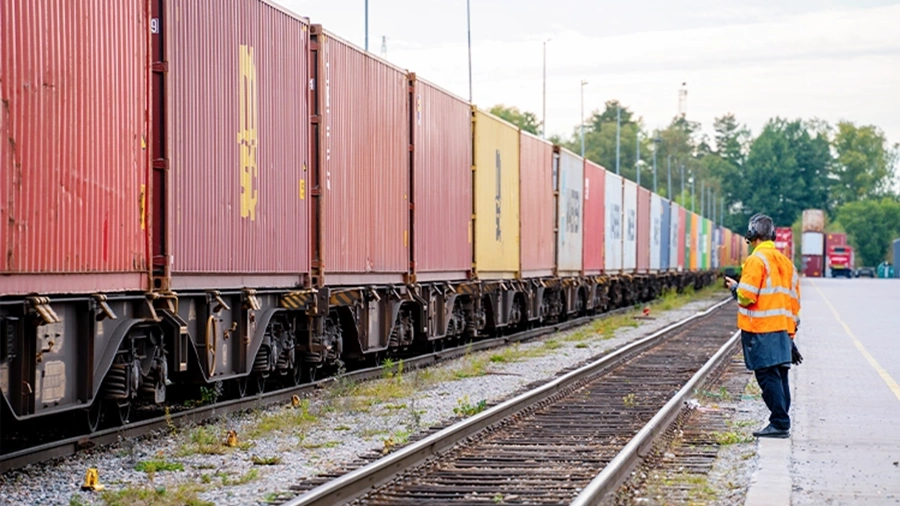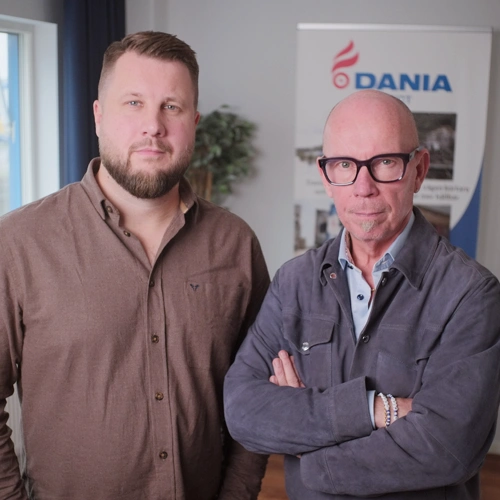Dania Connect cares for people, businesses, and the planet

Dania Connect has one focus – transporting sea containers from terminals to their final destinations. The company, headquartered in Denmark, has Swedish offices in Gothenburg, Stockholm, and Helsingborg. It’s from the Port of Gothenburg and APM Terminals that the company ensures Henrik Edfelt and his team at the intermodal terminal in Hallsberg stay busy.
With 15 weekly departures from Gothenburg – and some shuttles split into multiple routes – the company facilitates 20 arrivals to terminals in Hallsberg, Eskilstuna, Jönköping, and Helsingborg. Over 60% of the company’s volume in Gothenburg, or approximately 35,000 sea containers, is transported by rail to various terminals, leading to improved social sustainability.
- The Swedish Transport Administration conducted a study showing that our shift from road to rail transport reduces accidents, resulting in socio-economic savings of around SEK 100–120 million annually, says Markus Ekwall, Department Manager.
The reliability of rail transport is very high, says his colleague Stefan Bergström, Sales Manager. They know how to challenge common misconceptions about rail freight. Perhaps this is why Dania Connect decided years ago to operate block trains from point A to point B, a concept that has proven highly effective. Moreover, booking rail freight is straightforward – it takes just one contact to arrange door-to-door shipments.
Rail benefits both the environment and businesses, Stefan adds. It reduces carbon dioxide emissions by around 95%, and the lead times are unbeatable – containers lifted from the terminal in Gothenburg in the evening are delivered to Hallsberg the following morning.
The team is also very pleased with their collaboration with APM Terminals, which operates the container terminal in Gothenburg. If Dania Connect experiences delays on their end, they know APM Terminals will do everything possible to assist them, ensuring that the trains turn around and arrive on time.
- The team at the Port of Gothenburg are fantastic ambassadors. They talk about us and open doors for Dania Connect, says Stefan.
One challenge, however, is the newly introduced higher fees that reduce the competitiveness of rail transport. But according to Stefan, it’s a short-term issue:
-There are climate goals that must be met, and if we don’t achieve them now, we’ll have to do it later.

A perfect synergy: rail and road working together
Rail functionality and direct traffic are critical for Sweden, particularly Western Sweden, says Stefan. Replacing rail freight with trucks would be unsustainable – environmentally and practically. “The roads would simply become clogged.” While there are concerns about how the rail system is managed, Stefan is generally optimistic, especially about the recently completed double-track to the terminals at the Port of Gothenburg.
- One question we’re constantly asked by customers is whether we’ll run more trains and to where. The answer is: as long as there’s volume, we’ll run anywhere there’s a terminal. With more port calls to Gothenburg, volumes increase. This allows us to explore new rail solutions, which benefits the environment and is cost-effective, he says.
Dania Connect also operates trucks. In 2021, the company decided that all trucks at their terminals would run on HVO 100, and they installed their own tanks to ensure fuel availability. They’ve also tested electric trucks in pilot projects, with positive results. The next goal is for all trucks – local and long-haul – to run on HVO 100.
- Trains and trucks are often compared, but they complement each other brilliantly. Transporting containers long distances by rail and then using trucks for last-mile delivery creates an excellent intermodal solution. It’s far more flexible for customers than trucking the entire way, says Markus.
What’s their outlook for the future?
- Interest rate cuts aren’t a bad thing. But even though we’re said to be in a recession, we’re running at full capacity, Stefan laughs.
- The question is, what will we do if there’s an economic boom?